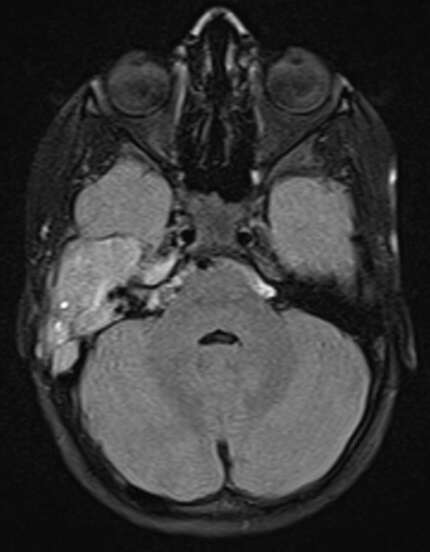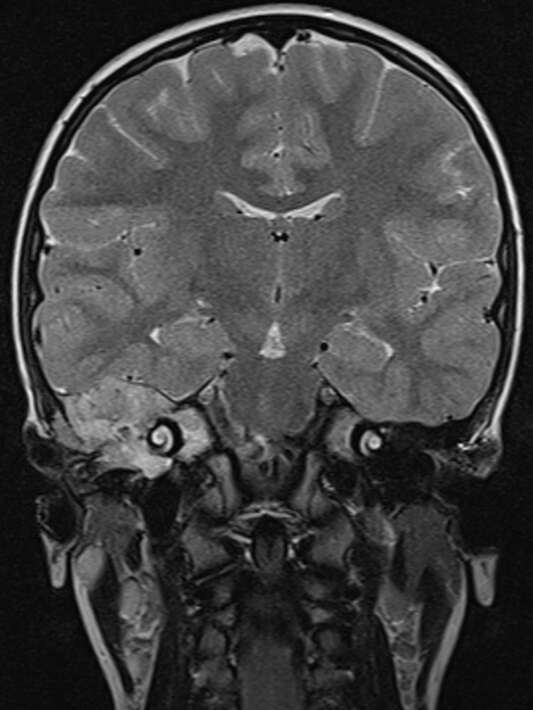
Another Acute Media Otitis, Now What?
2Department of Otorhinolaryngology, Beatriz Ângelo Hospital, Portugal
Background: Rhabdomyosarcoma is the most common soft tissue sarcoma in children, however its location on the ear or temporal bone is quite rare. We present a case report of an uncommon clinical presentation of this disease.
Clinical Case: Male child, 6 years old, healthy, presenting right ear otalgy, homolateral face oedema and lip commissure asymmetry. A suggestive examination prompted an initial diagnose of an Acute Media Otitis complicated with facial palsy.
Oral treatment was started, initially with amoxicillin 90 mg/kg/day and prednisolone 2 mg/kg/day, after which, due to lack of improvement, with cefuroxime 40 mg/kg/day, and a new course of prednisolone.
Because of progressive worsening symptoms, a hospital admission was proposed for intravenous antibiotics (Ceftriaxone 100 mg/kg/day + Clindamycin 20 mg/kg/day) and corticotherapy (prednisolone 2 mg/kg/day) and further investigation.
Urgent Computerized Tomography of the ear showed a right erosive media and external otitis, with total opacification of the ear, and mastoid osteitis on various locations, and Magnetic Resonance revealed a bulky tumefactive lesion, involving the right temporal bone.
An exploratory tympanomastoidectomy was proposed, revealing a bulky obliterative polypoid lesion, that was partially removed, with pericortical, cortical, tegmen tympani and mastoid invasion from a polypoid-like neoformation submitted to biopsy. Anatomopathological examination, revealed a Rhabdomyosarcoma of the ear. Chemotherapy was started, with clinical improvement.
Conclusion: Rhabdomyosarcoma presentation symptoms can often mimic Chronic Suppurative Acute Media Otitis, making it a challenging, but important differential, as an early diagnosis can dramatically influence the overall survival rates.


Powered by Eventact EMS